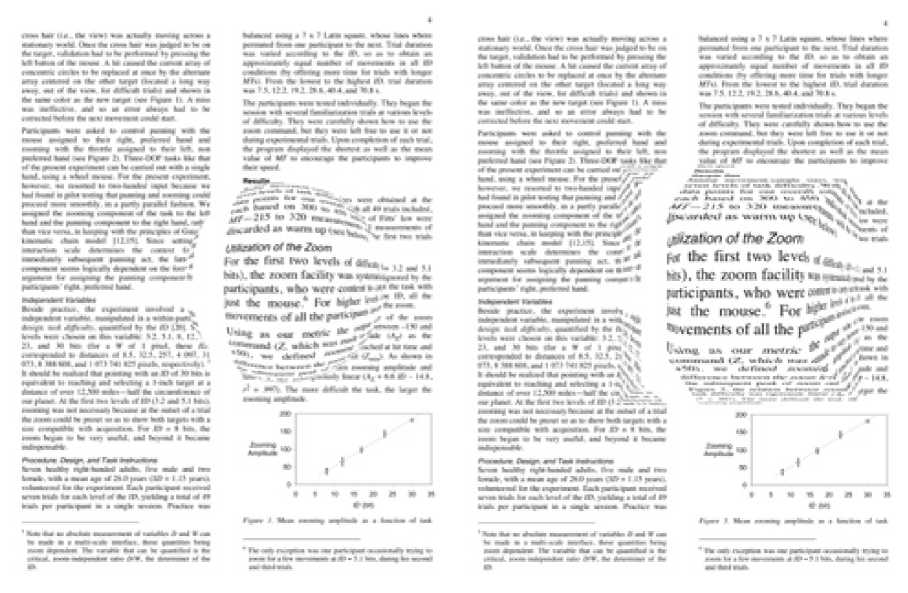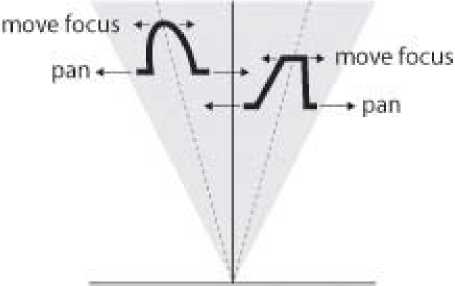13
The main limitation of bifocal displays is that the relative scale of the two views cannot be too
large, otherwise view navigation becomes cumbersome. They are thus appropriate only for
moderately large documents unless used in combination with another multi-scale technique.
3.3.2. The Fish-eye Technique
Fish-eye views (Furnas, 1986) use optical distortion to include both detail and context within
a single view. Unlike the bi-focal display, there is a continuous transition between context and
detail. Several distortion modes are possible, including the spherical (Figure 11, left) and the
linear distortion (Figure 11, right) (see Carpendale and Montagnese, 2001, for a larger list).
With a fish-eye view, no parts of the document are hidden by the overlay of multiple views.
However, the distortion tends to make it difficult to interpret the content of the view,
especially when text is displayed. In practice, the distortion limits the scale of the focus area
relative to the scale of the overall view, and so this technique suffers, probably to a greater
extent, the same kind of limitation as the bi-focal technique.

Figure 11. The fish-eye technique with spherical (left) and linear (right) distortion.

More intriguing information
1. NVESTIGATING LEXICAL ACQUISITION PATTERNS: CONTEXT AND COGNITION2. The name is absent
3. The name is absent
4. Optimal Vehicle Size, Haulage Length, and the Structure of Transport Costs
5. Tobacco and Alcohol: Complements or Substitutes? - A Statistical Guinea Pig Approach
6. Licensing Schemes in Endogenous Entry
7. From music student to professional: the process of transition
8. The name is absent
9. WP 1 - The first part-time economy in the world. Does it work?
10. EMU: some unanswered questions